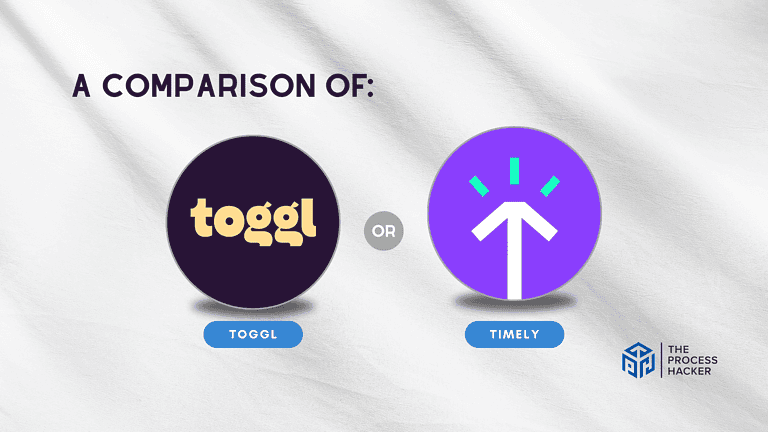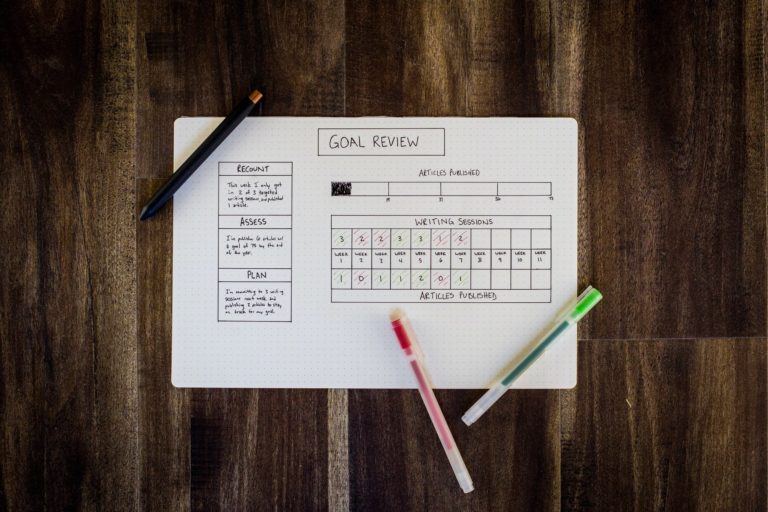How to Habit Stack
Are you tired of setting goals and failing to reach them? Do you feel like you’re constantly spinning your wheels without making real progress?
There’s a simple way to change this. Habit stacking is a powerful technique for transforming small, consistent actions into major life upgrades.
Imagine effortlessly incorporating healthy routines, reaching your goals, and becoming more organized and productive. Habit stacking makes it possible!
Ready to unlock the power of your habits? Learn how to master habit stacking and start building the life you want.
What is Habit Stacking?
Habit stacking is a powerful strategy designed to help you build new habits by integrating them into your routine. Imagine linking a new habit you wish to cultivate directly to a sequence of actions you perform daily without fail.
This method relies on the principle of cue-based behavior. By attaching a new behavior to a specific, well-established cue, it takes less mental effort to perform the habit while you significantly increase the chance of permanently adopting it in your daily routine.
It’s like adding a new chapter to a book you know by heart – seamless and efficient. This approach not only maximizes your potential for success but also simplifies the process of personal development, making it accessible and manageable.
Why You Should Use Habit Stacking For A Desired Habit
Finding time and mental space for new habits in the bustling rhythm of everyday life can often feel like trying to fit extra habit books onto a full shelf. Yet, the importance of continuously improving and adding beneficial routines to your life cannot be overstated—it’s the bedrock of personal growth and achieving your goals.
This is where habit stacking comes in. It allows you to integrate new habits into your life without the overwhelming feeling of overhauling your entire routine.
- Efficiency: It leverages your already-established routines, making it easier to adopt new habits without additional time investment.
- Effectiveness: By associating new habits with established ones, you’re more likely to stick to them.
- Simplicity: It simplifies the complexity of habit formation, making the process more accessible and manageable.
- Personal Growth: Facilitates continuous improvement and self-development in a manageable way.
- Goal Achievement: A catalyst in reaching your personal and professional goals by ensuring consistent progress.
With habit stacking, you can incorporate new habits into your routine, ensuring they stick and propel you toward your desired outcomes. Plus, you will gain a practical tool for personal development, ensuring that each day is a step towards becoming the best version of yourself.
How to Build New Habits on Top of Old Ones
It’s easy to feel overwhelmed when you have big goals. You want to eat healthier, be more productive, or finally start that side project. But creating lasting change is tough!
Habit stacking is the answer, so here are the steps to stack habits:
- Identify Your Anchors: Look at your current daily routines to pinpoint actions already second nature to you. These will serve as your anchors.
- Choose Your Add-Ons: Select small, manageable tasks to incorporate into your routine. Keep them simple to ensure success.
- Create Routines of Multiple Habits: Link each new task to an anchor habit by creating a mental or written note that after doing X (anchor), you will do Y (new habit).
- Celebrate Small Wins: Acknowledge every time you complete a habit stack. This reinforcement is crucial for making your new habit stick.
- Review and Adjust: Review your habit stacks regularly. If a particular stack isn’t working, tweak it until you find an effortless combination.
Now that you understand the steps of habit stacking, it’s time to dive deeper into how to apply this strategy effectively in your everyday life.
With patience and persistence, you’ll soon master new behaviors and skills by leveraging the power of habit stacking to lead a more productive and fulfilling life.
Step 1: Identify Your Anchors
Identifying your anchors serves as the foundation for building new habits in your habit stack.
Think of your daily life as a series of anchor points—those habits so deeply ingrained in your routine that you perform them almost without thinking. These routines punctuate your day, from the morning alarm that heralds the start of your day to the evening ritual that signals it’s time to unwind.
I recommend carrying a small notebook or using a note-taking app on your phone for a few days. Record every routine activity that happens at roughly the same time each day or in response to a specific trigger. Examples include brushing your teeth, brewing your morning coffee, or even sitting at your desk to begin work.
Look for numerous habits that feel automatic, those you do with little to no mental effort. These are your anchors. The beauty of these anchors is their stability—they provide a predictable structure to your day, making them ideal launching pads for new habits.
After a few days of observation, you should have a list of potential anchors. Don’t rush and take the time to identify your anchors accurately to be more successful with your habit-stacking strategy.
Step 2: Choose Your Add-Ons
After pinpointing your anchors, the next step is to select the new habits you wish to incorporate into your daily life.
These are your add-ons, the behaviors or tasks you aim to make as automatic as the anchors they’ll be attached to. Choosing the right add-ons is crucial because it determines the sustainability of your habit-stacking efforts.
To execute this step, identify areas where you’d like to see improvement or change. Do you want to be more mindful? Increase physical activity? Read more?
Whatever your goal, break the habit down into specific, actionable habits that can be easily stacked onto your anchors. For example, if you aim to increase hydration, your add-on could be drinking a glass of water with your morning coffee.
When choosing your add-ons, keep two key principles in mind:
- Keep It Simple: The more straightforward the task, the easier to integrate it into your routine without much resistance. Complex tasks can feel overwhelming and might deter you from sticking to them.
- Be Specific: Vagueness can lead to procrastination. Instead of saying, “I’ll read more,” decide to read a page or a chapter of a book after breakfast or during your lunch break. Specificity leads to action.
Once you’ve chosen your add-ons, mentally (or physically) attach each to an anchor habit. Visualize or note down this connection to solidify your intention and prepare you to integrate new habits into your daily life.
Habit Stacking Examples:
- After brushing my teeth in the evening, I floss my teeth with floss picks available right next to my toothbrush.
- After waking up, my gym bag next to my bed will remind me to go to the gym right after waking up.
- After finishing my workout, I will meditate for 5 minutes.
Step 3: Create Routines of Multiple Habits
With your anchors identified and add-ons chosen, the next crucial step is to create routines.
This involves linking your new habits (the add-ons) directly to the existing habit (your anchors) so that the completion of an anchor habit automatically triggers the initiation of the add-on habit. It’s about creating a seamless flow from one behavior to the next, turning your aspirations into actual practices.
To execute this step effectively, approach it with a mindset focused on precision and consistency. Start by clearly defining the moment an anchor habit concludes, as this moment becomes the cue for your add-on habit.
For instance, if your anchor makes your bed in the morning, placing the last pillow could be your cue for a quick five-minute stretching session. The clearer and more consistent you are with these cues, the stronger your trigger chains will become.
Here’s how to solidify your trigger chains to make habit stacking work:
- Write It Down: There’s power in writing. Jot down each anchor-add-on pair. For example, “After I place my coffee cup in the sink, I will immediately write three things I’m grateful for.” Writing reinforces the connection between the behaviors.
- Visualize the Chain: Spend a few moments visualizing yourself performing these actions in sequence. Mental rehearsal primes your brain to follow through when the situation arises.
- Keep It Consistent: Consistency strengthens associations. The more regularly you perform the trigger chain, the more ingrained it becomes in your routine.
Creating and reinforcing these trigger chains bridges the gap between intention and action. Each day, as you seamlessly move from anchor habits to add-ons, your new habits will integrate into your life as naturally as the old ones.
This step isn’t just about building habits; it’s about weaving your aspirations into the fabric of your daily existence, making personal growth an inevitable part of your routine.
Step 4: Celebrate Small Wins
After laying the groundwork with anchors and crafting your routines, you have to celebrate your progress and wins. By acknowledging the small victories along the way, you will be much more motivated and committed to your new habits.
Every time you complete a habit stack, you’re not just ticking a box but reinforcing a new layer of your ideal self. Celebrating these moments can catalyze your momentum, turning sporadic efforts into a sustained habit-forming journey.
To make your celebrations immediate and aligned with your motivations, you should:
- Identify Rewarding Actions: Choose rewarding actions that can be enjoyed immediately after completing your new habit. This could be something as simple as a moment of self-praise, a special treat, or a few minutes doing something you love.
- Make It Personal: The celebration or reward should resonate with you. If you value quiet time, perhaps sitting with a cup of tea for a few minutes in silence could be your reward. Sharing your success on social media or with a friend might be more satisfying if you’re more extroverted.
- Keep It Proportional: The scale of the celebration should match the effort. Small daily habits warrant small celebrations, ensuring you don’t overshadow the habit itself but rather enhance the sense of achievement that comes with it.
- Reflect on Your Progress: Take time weekly to reflect on the habits you’ve developed and the successes you’ve celebrated. This will boost your morale and help you see the bigger picture of your personal growth journey.
By celebrating your small wins, you reward yourself and reinforce the behavior you want to become a permanent part of your life. This step helps you build an internal motivation system that encourages you to keep going, even when the good feelings wear off or challenges arise.
With each celebration, you acknowledge your progress and pave the way for long-term change, making each step forward a reason to celebrate.
Step 5: Review and Adjust
The final step in mastering habit stacking is periodically reviewing and adjusting your routines.
We are reflecting and fine-tuning our habit stack to ensure that each habit stack serves you well and moves you closer to your goals. Remember, the aim here is progress, not perfection. Flexibility and openness to change are your allies in this process.
To effectively execute this step, set aside regular intervals for review—be it weekly, monthly, or whatever suits your schedule best. During these reviews, ask yourself the following questions:
- Are my habit stacks flowing smoothly? If a particular stack feels forced or consistently difficult to execute, it might need tweaking. The transition between habits should feel natural and effortless.
- Am I seeing the benefits I expected? Consider whether the new habits are having the desired impact on your life. If not, it might be time to reassess the habits or how they are stacked.
- What adjustments can I make for better results? Sometimes, a small tweak in timing, sequence, or habit can make a difference. Be open to experimenting with these elements to find if habit stacking works best with them.
Here’s how to make the most of the review and adjust process:
- Keep a Current Habit Journal: Documenting your observations and feelings about your habit stacks can provide valuable insights during your review sessions. It can highlight patterns or issues you might not notice day-to-day.
- Seek Feedback: Sometimes, an outside perspective can offer new insights. Don’t hesitate to share your habit-stacking efforts with a friend or mentor who can provide constructive feedback.
- Be Patient and Kind to Yourself: Change takes time, and not every adjustment will yield immediate results. Celebrate the effort you’re putting into self-improvement and recognize that each step forward is a victory, no matter how small.
Incorporating regular review and adjustment into your habit-stacking routine ensures that your efforts align with your evolving goals and circumstances. This ongoing process of reflection and refinement is key to building effective and sustainable habits in the long run.
Key Considerations For Successful Habit Stacking
It’s important to remember that successful habit stacking requires some experimentation. Don’t get discouraged if a particular stack doesn’t feel right—simply adjust and try a new combination!
Also, don’t try to stack too many habits at once. Focus on mastering one or two new habits at a time. Once those feel automatic, then you can gradually add more.
Finally, be kind to yourself! Building new habits takes time, and the occasional slip-up is perfectly normal. Just get back on track and keep stacking those positive actions.
Taking it to the Next Level: Read Atomic Habits
Want to get better at habit-stacking? In “Atomic Habits,” habit-stacking expert James Clear helps you build lasting routines and achieve your goals. This book delves deeper into the science behind habit formation, offering additional strategies and insights.
In “Atomic Habits” you’ll learn:
- How to make new habits feel effortless and rewarding.
- Proven techniques for overcoming undesirable habits.
- Strategies for designing your environment to support your goals.
If you’re committed to transforming your life through the power of habit stacking, “Atomic Habits” is a valuable read for your learning toolkit.
Alternatives to Habit Stacking
While habit stacking is a fantastic tool, it might not resonate with everyone’s style. Here are a few more powerful techniques:
- Temptation Bundling: This involves linking something you want to do with something you should do. For example, listen to your favorite podcast only while working out or enjoy a guilty-pleasure TV show only while folding laundry.
- Time-blocking: Instead of tying habits to existing ones, time-blocking focuses on scheduling specific blocks of time for desired activities. This is great for people who thrive with structure and defined work periods.
- Micro-habits: Feeling overwhelmed by big changes? Micro-habits involve breaking down goals into ridiculously small steps. Instead of “exercise for 30 minutes,” your micro-habit might be “do five pushups.” This builds confidence and makes healthy actions feel less intimidating.
- The “Don’t Break the Chain” Method: This visual approach relies on a calendar and a marker. You mark an “X” on the calendar each day you successfully perform your desired habit. The goal is to create a long, unbroken chain of “X”s – it becomes surprisingly motivating.
- Tiny Habits Method: Developed by Dr. BJ Fogg, it focuses on starting with incredibly small actions. For example, your tiny habit could be flossing one tooth or putting your workout clothes out the night before. The goal is to make the habit feel so easy that you can’t help but do it.
Remember, the best strategy is the one you’ll stick with! Experiment to find the approach that makes building good habits feel achievable and fun.
Final Thoughts on Habit Stacking
Habit stacking is a simple yet incredibly effective way to upgrade your life. By linking new, positive habits to things you already do, you make change feel much more manageable.
Personally, habit stacking has been a game-changer for me. It’s how I’ve finally built a consistent exercise routine, improved my hydration, and started reading more often.
Start habit stacking by keeping it small, experimenting with different stacks, and being patient with yourself. This journey is about progress, not perfection.
With a little practice, you’ll be amazed at how habit stacking transforms your routines and empowers you to reach your goals.







